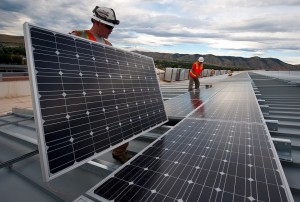 It may still pale in comparison to traditional sources of power, such as coal-burning power plants, but solar continues to encompass a growing portion of the United States power grid.
It may still pale in comparison to traditional sources of power, such as coal-burning power plants, but solar continues to encompass a growing portion of the United States power grid.
According to a recent report published by GTM Research and Solar Energy Industries Association, the solar energy sector in the U.S. roughly doubled its solar power installation capacity last year when compared to just one year prior in 2015, signaling a positive trend for the clean energy market. Solar power was once viewed as an “alternative” source of power. However, these new findings suggest that it’s now a viable contender in the energy field.
With the substantial growth of the country’s solar power sector comes numerous benefits and incentives for vendors, such as lower production and installation costs. According to GTM Research and the Solar Energy Industries Association’s report, the cost of solar power has declined by roughly 18% — a trend that will likely continue in the years to come, allowing consumers to take advantage of lower costs for solar power and its associated hardware.
When speaking about the cost of solar power, SEIA’s president and CEO Abigail Ross Hopper said that prices have dropped to an “all-time low.” She added that more people are reaping the benefits of solar power now than in the past, due largely in part to the low costs.
“The U.S. installed 14,800 megawatts (MW) of solar PV in 2016 to reach 42.4 gigawatts (GW) of total installed capacity, enough to power 8.3 million American homes. With more than 1 million residential solar installations nationwide and record-breaking growth in the utility-scale sector, the industry is poised to nearly triple over the next five years, surpassing 100 GW nationwide,” wrote analysts in their report.
In a separate report released by the Solar Energy Foundation, analysts say that roughly 1 in 50 jobs created last year involved solar energy. In today, the sector now employs more than a quarter-of-a-million workers. In comparison, only 90,000 individuals were employed in the solar energy sector a decade ago.
Of course, some states have experienced stronger growth in the solar power sector than others. For instance, California has been the country’s leader of solar power for quite some time. In the report, however, several other states have climbed to the top, including Minnesota, South Carolina, and Georgia.
There are numerous benefits associated with solar power, only one of which is its environmental impact. Unlike coal-burning power plants, solar panels do not produce greenhouse gases like carbon dioxide. Furthermore, they often come with tax benefits and other incentives, as both federal and state governments seek ways to encourage greater use of solar power.
No tags for this post.